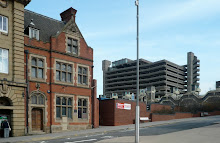

Above: Wolfgang Weileder Electric Movement in Water, 2013 Rubber dinghies, printed sails
Below: Jo Coupe Give and Take, 2013 Glass tanks, copper sulphate solution, copper pipes, electrical components and roses
Courtesy of the artists and Workplace Gallery, UK
Building Dreams
Wolfgang Weileder
Jo Coupe
rednile projects
Irene Brown
9 July 2013 - 3 November 2013
To mark the 150th anniversary of Cragside we're working with regional artists to produce three new commissions that are inspired by the story of Lord and Lady Armstrong and their pioneering dreams for the house and landscape.
Wolfgang Weileder, Electrical Movement on Water, 2013
Wolfgang Weileder's recent work is primarily concerned with the exploration and critical deconstruction of architecture, public spaces and the interactions we have with the ubiquitous urban environment. Focusing on large-scale temporary site-specific architectural installation and sculpture in the urban environment. His work also branches into performance, film, photography and sound installation.
As the title suggests the work refers to Lord Armstrong's electrical experiments carried out at the estate and published in his book: 'Electric movement in air and water: with theoretical inferences'. The work is located at Nelly's Moss Lake and highlights the site as a landscape feature and as the vital water supply used to power Armstrong's hydroelectric system.
The installation consists of three full size sailing dinghies floating on the lake. Each dinghy will have a double-sided printed sail. The images printed on the sails are taken directly from the photographic plates of electrical discharges published in Armstrong's 1897 book.
The installation and image details will be clearly visible to visitors walking along the path around the lake, constantly changing as the walk progresses. The juxtaposition of Lord Armstrong's photographs of his electrical experiments, the site of Nelly's Moss Lake as well as the manifestation of wind and air in the function, form and movement of the sailing dinghies offer a new visual experience and interpretation on Armstrong's inventive and visionary spirit."
Jo Coupe, Give and Take 2013
Give and Take is a live sculpture which investigates the changeable nature of materials and considers electricity as an agent of life, movement and thought.
Five tanks are filled with copper sulphate solution and a live electrical current is passed through the liquid. A rose is suspended in each tank, and a forest of copper pipes complete the circuit. Over the course of the exhibition, a delicate fur of copper particles accrues on the roses, eventually rendering them unrecognisable and becoming so heavy that small piles of dust form on the tank beneath them.
The presence of Give and Take in the Electricity Room at Cragside connects to the original use of the space as a studio-laboratory for Lord Armstrong's explorations into electrical conduction. These experiments took place in the years following the death of his wife, Margaret and it's tempting to read his absorption in electricity as a Frankensteinian attempt to reanimate his lost partner. Contemporary experiments using electricity to make frogs legs twitch long after death, as well as the fictional efforts of Mary Shelley's anti-hero, trace these connections between life and electricity.
Give and Take touches on both the Romantic and the scientific ghosts of the Electrical Room and hopes to bring life, of a kind, back to the space.
Cragside
Rothbury, Morpeth, NE65 7PX
Tel: 01669 620333
cragside@nationaltrust.org.uk




